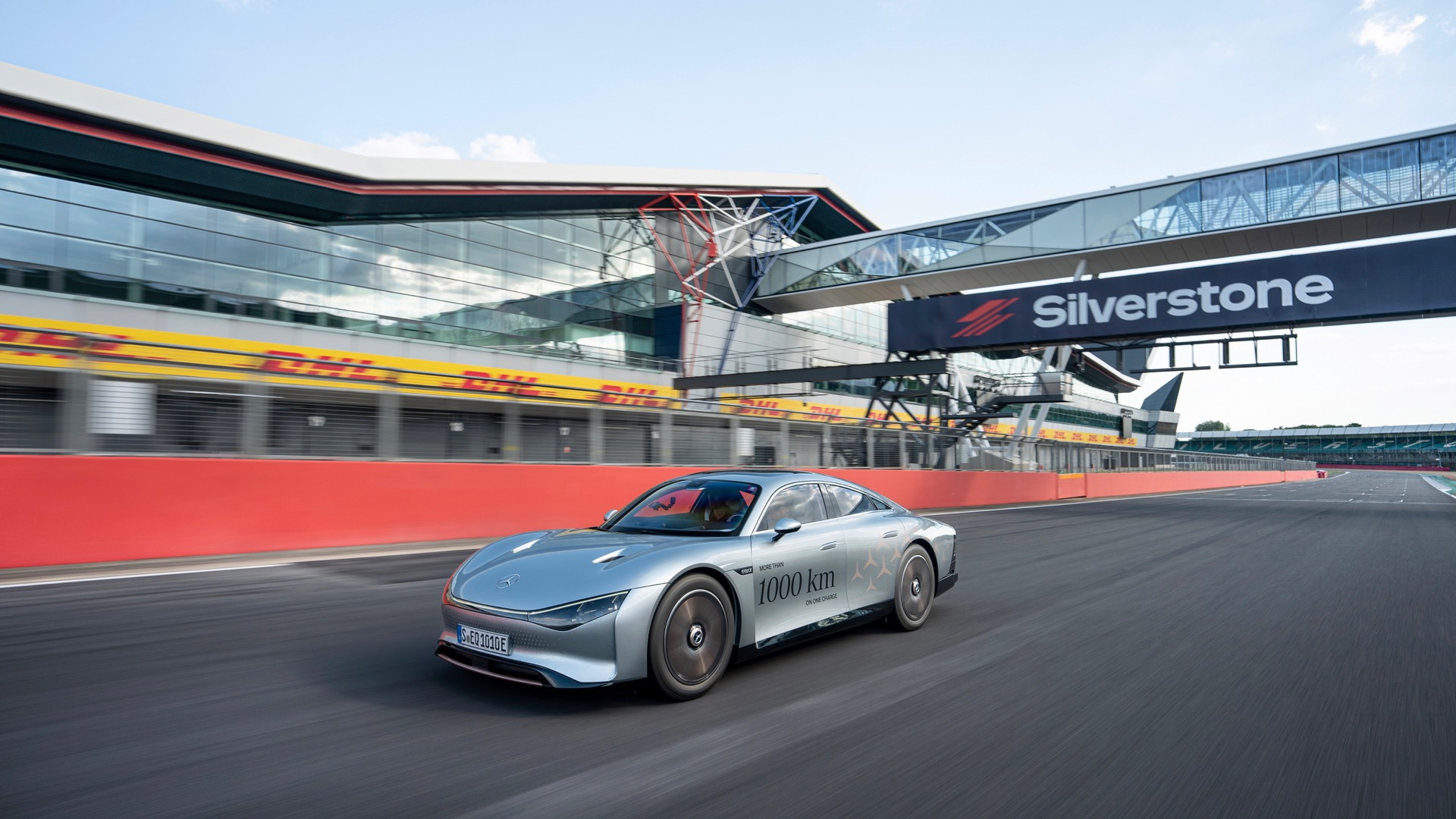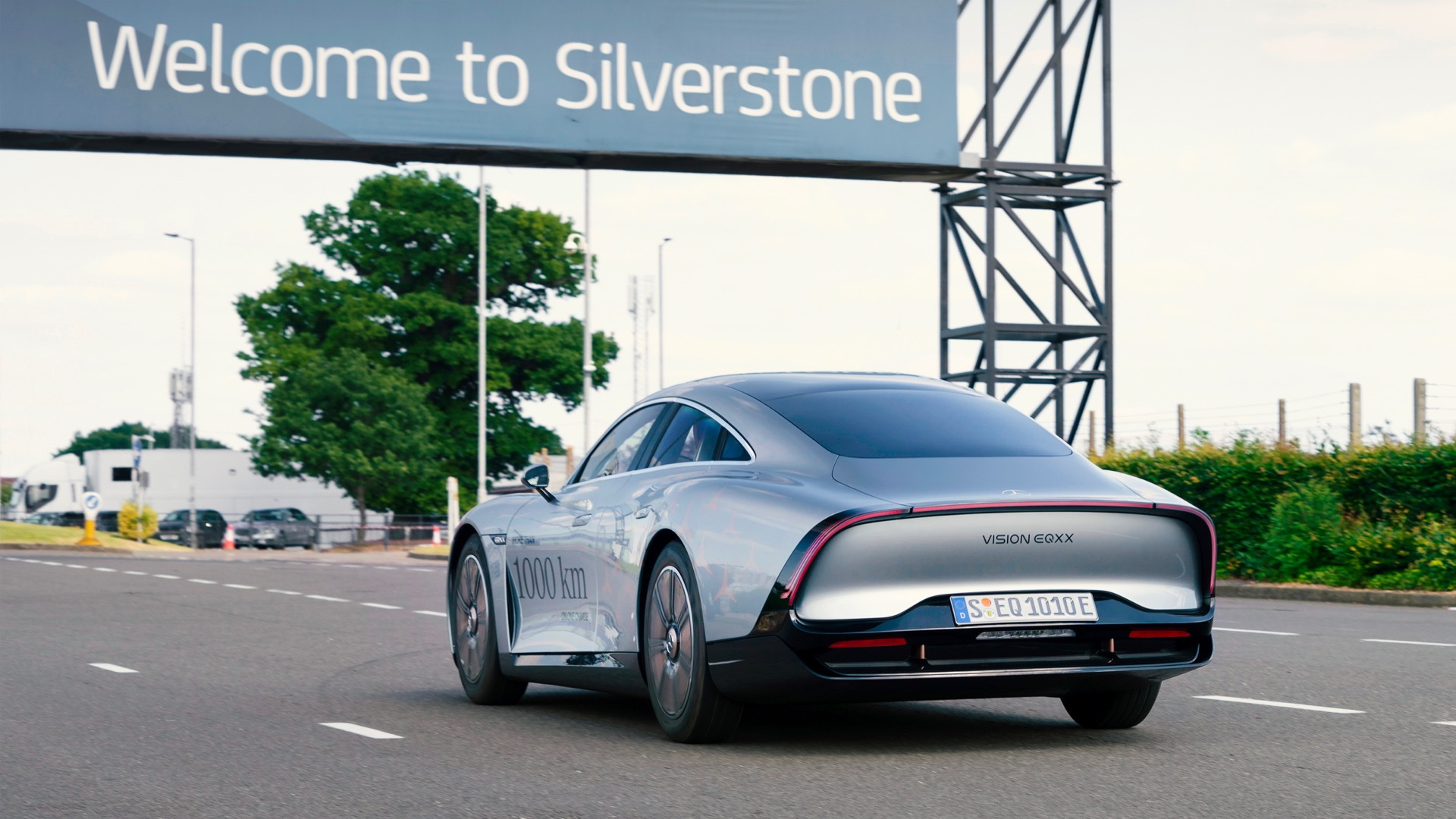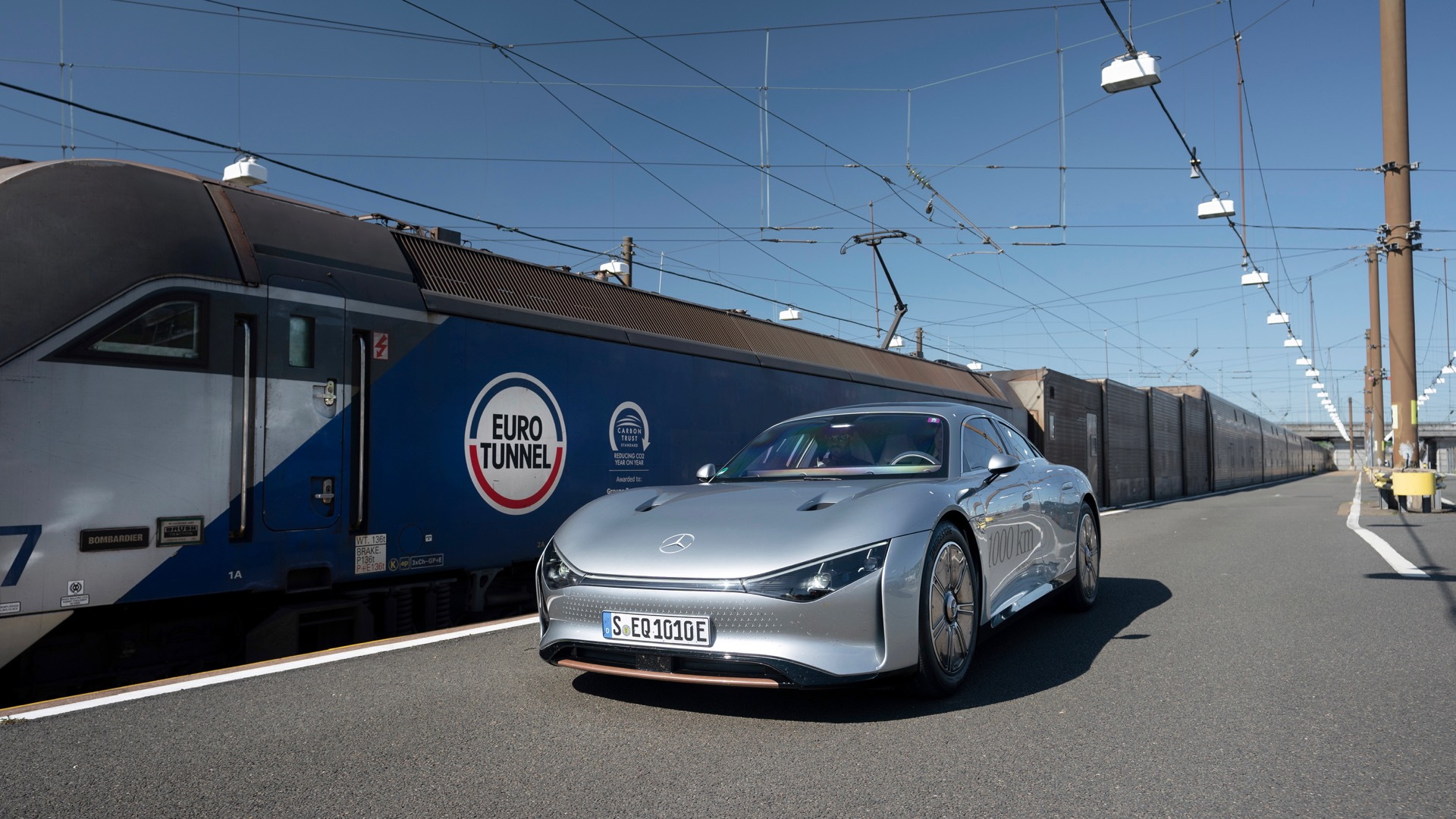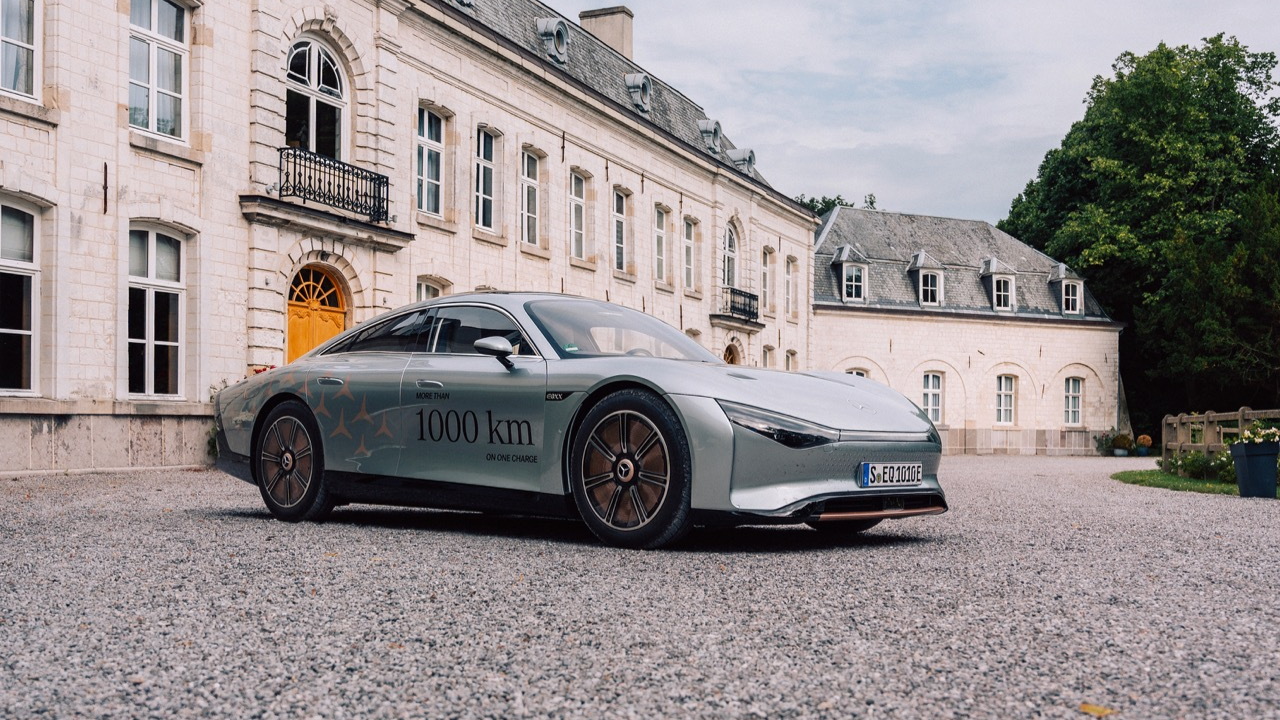After traveling 626 miles on a single charge earlier this year, the Mercedes-Benz Vision EQXX concept has broken its own record with a 1,202-kilometer (746-mile) dash between Stuttgart, Germany, and Silverstone, England.
During the trip, the Vision EQXX averaged energy consumption of 7.5 miles per kwh, Mercedes said Thursday in a press release. The journey involved 14 hours and 30 minutes of driving over two days, with an average speed of 52 mph and top speed of 87 mph, the automaker said.
Mercedes sent the Vision EQXX on this second long-distance trip to test it out under different conditions. The first drive, conducted in April, took the car from Stuttgart over the Alps to the French Riviera in relatively cool springtime weather.
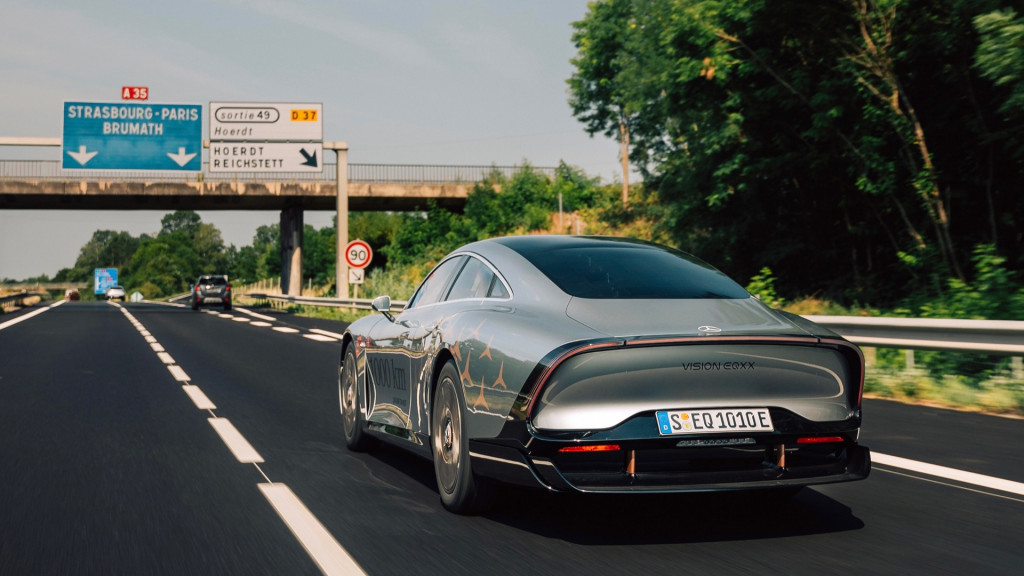
Mercedes-Benz Vision EQXX 1,202-km run
This trip didn't involve the more aggressive energy use and regenerative braking of the Alpine crossing, but drivers had to deal with warmer temperatures and increased traffic around Stuttgart and in southeast England, according to Mercedes. While the air conditioning was used for about eight hours of the drive, it had a "minimal effect" on overall energy consumption, the automaker claims.
The Vision EQXX traveled across Germany and France to Calais, where it was loaded on a Eurotunnel train for a trip underneath the English Channel. Drivers then took the M25 motorway to Silverstone, with a stop at the Mercedes-Benz Formula One base in Brackley. The car then did 11 laps of the Silverstone track in the hands of Formula E driver Nyck de Vries—hitting its 87 mph maximum speed.
Unveiled in January at the 2022 Consumer Electronics Show (CES), the Vision EQXX achieves impressive range by optimizing every aspect of the car, from software and aerodynamics to motors and materials. Mercedes tapped all of its various division to maximize the car's efficiency, including the Formula One team.
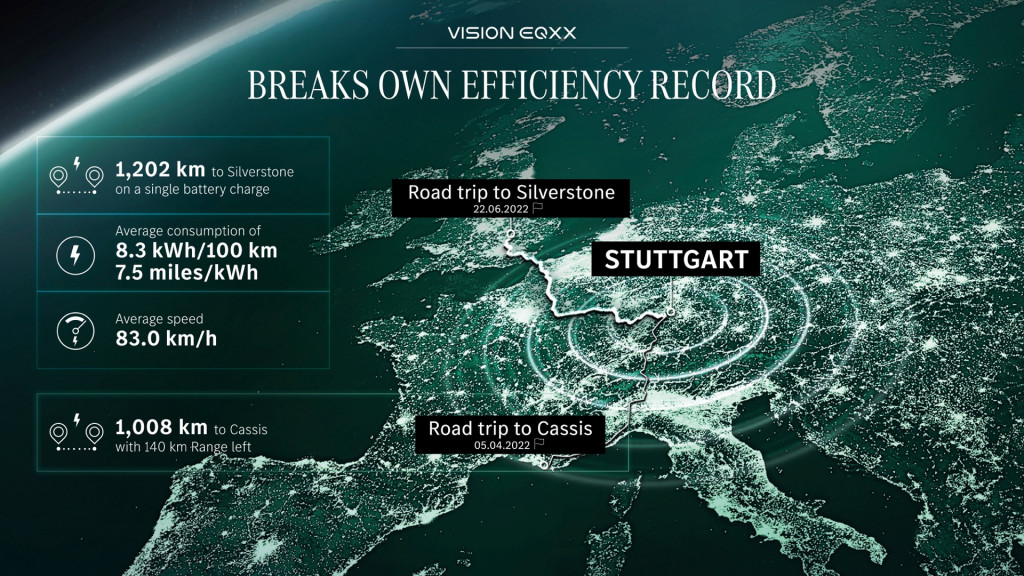
Mercedes-Benz Vision EQXX 1,202-km run
A coefficient of drag of about 0.17 beats the 0.20 Cd rating of the Mercedes-Benz EQS, which has the lowest rating of any production vehicle. A power-extendable rear diffuser helps reduce drag, while integrated aero shutters work with a series of coolant valves and water pumps to maintain optimum temperatures for the battery and drive unit.
To help reduce weight, engineers used software tools to create parts with high strength while using the least material possible, similar to what we've seen from hypercar startup Czinger. The Vision EQXX also has an integrated solar panel to supply supplementary electricity, something also proposed by startups Aptera, Lightyear, and Sono.
Mercedes isn't expected to launch a production version of the Vision EQXX, but with the automaker aiming to go all-electric by 2030, we hope to see at least some of the concept's technology on future production cars.

